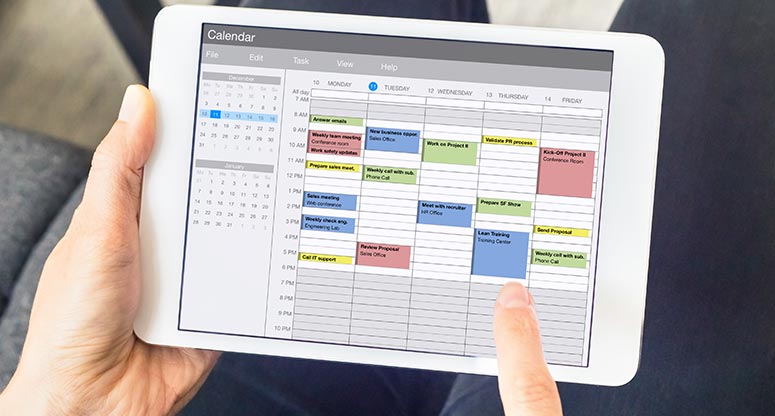Remote work has many advantages, including more flexibility, the opportunity to save money by staying at home, and fewer distractions than an onsite office setting. Working at home also comes with challenges, however, a common problem is effective time management.
Fortunately, you can improve time-management skills the way that regular exercise will make you fitter and stronger. Here are seven strategies to achieve better time management—one effective minute at a time.
1. Plan ahead – If you are working at home, it’s more important than ever to have excellent timekeeping skills. By making a plan, you will know what needs to be done each day to keep you on track. And you’ll be aware when things happen that threaten to push you off course. Aim to plan your day the night before.
2. Update your task list – Your task list is not set in stone. On the contrary, keep your list of things to do light, fluid, and flexible. This way, you will be, too.

One great idea is to draw a line under the last task for the day. When something crops up during the day, add it under the line you drew. With this system, you’ll see the intrusions to your plan and react to them accordingly.
3. Focus on high-value activities – Some activities feel satisfying, but don’t move you toward achieving your primary goals. Email is a classic example. Each “reply” or “delete” can give you a feeling of satisfaction, but it doesn’t write a report for you or prepare for your presentation.
4. Procrastinate proactively – Just as you decide what you must do today, decide which low-value tasks you are not going to do. Some people have called this positive or proactive procrastination.

5. Minimize interruptions – According to Gloria Mark at the University of California, every interruption costs an average of 25 minutes. This makes minimizing interruptions critical.
You can minimize them by:
- Turning off mobile devices or switching them to airplane mode.
- Restricting socializing to off-work hours.
- Saying no when saying yes would impede your work.
- Using a task list to stay focused and avoid procrastination on low-value activities.
6. Limit multitasking – The problem with multitasking is that what most people call multitasking isn’t multitasking at all. It’s task-switching. An example of multitasking is going for a walk for some exercise and listening to a podcast. You can achieve these goals at the same time. Designing an infographic, checking inventory, and returning a call to a client, however, require full attention. Attempting to do all three at once invites failure and reduces efficiency.

7. Review your day – Peter Drucker, regarded as one of the greatest management thinkers of all time, said: “if you can’t measure it, you can’t improve it.” Review your day. Learn from what went well—and from areas where you could do better.
Those who work at home may find that they lack and miss the structure of an onsite workplace, but there’s no need to return to an office for office-like time management. Improving your ability to manage your time is a matter of developing useful habits. With this in mind, you can become a more productive, more successful freelancer every day.



